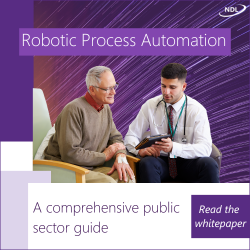
Home Office Accelerated Capability Environment (ACE) and NHS AI team demo tool for automatically identifying areas of interest for human follow-up.
Machine learning based algorithms could soon lead to diagnoses that currently take six hours being slashed to minutes, researchers have said after highly promising results from a 12-week look into use of AI in vital lab work.
The team was led by the Home Office ACE which has a mission to take a highly innovative and disruptive approach to solving technology and data problems facing public sector agencies, primarily in law enforcement and national security.
In turn, ACE is powered by Vivace, a community of multi-disciplinary organisations and experts drawn from industry and academia who collaborate to deliver highly innovative solutions at pace. In this probe, a specialist company called Polygeist was the main tech partner.
ACE worked with NHS AI Lab Skunkworks, which was set up to demonstrate the potential for Artificial Intelligence in health and social care. The pair were aided by the largest membership-based charity in the world, Parkinson’s UK.
The charity gave the team a dataset containing 401 digitised images of brain sections from its Imperial College London-based tissue store, which has more than 1,300 brains from people with Parkinson’s, as well as healthy donors.
This resulted in material for detecting alpha-synuclein (a-syn), a protein which is the pathological marker of Parkinson’s, as well as 100 control cases from healthy donors.
Breakthrough
Polygeist then achieved a diagnosis breakthrough by repurposing existing technology to exclude other types of brain matter that were not needed for this process. It then synthetically stained slides of brain tissues using the iDeepColour neural network, which highlights and stains areas affected by a-syn. Once processed, areas of interest turned bright green, making them quickly identifiable by human experts.
“Chopping up” the original image, add the researchers, and slicing it into squares, also means counting the green areas also gave a strong indication of disease density. This work enabled researchers to quickly develop a proof of concept classifier which achieved around a 92% accuracy hit rate on automatically classifying Parkinson’s from digitised images of brain sections, with no false alarms.
Applying this process meant moving from a four to six hour Parkinson’s sample assessment phase to minutes. A significant time saving if replicated on a mass scale across the NHS, that would allow neurologists to focus on more complex cases.
Enhancing processes
The team claimed the quality of the tool is approaching viability for real world applications, with work already starting on how to enhance the new process to better differentiate stages of disease, as well as looking into whether proteins which indicate dementia can also be identified.
There is also potential to use this technique with brain scans on live patients in the future, ACE concludes.





